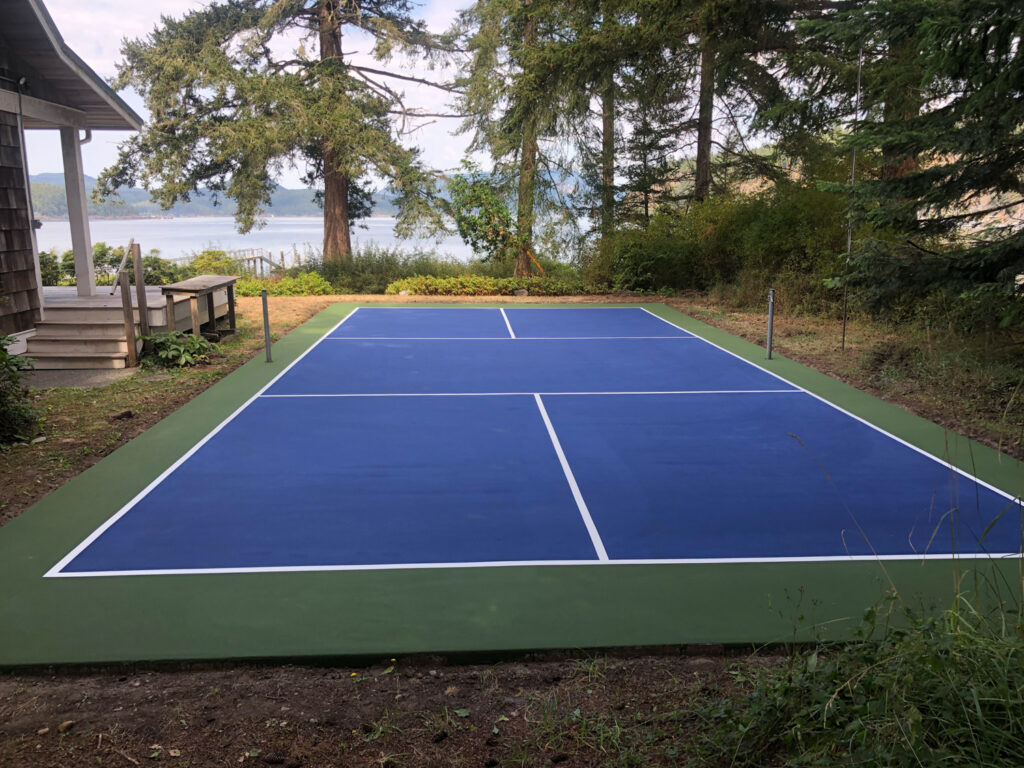1. Introduction
Pickleball was invented in 1965 on Bainbridge Island, a small island located near Seattle, Washington. The sport’s origins can be traced back to three friends – Joel Pritchard, Bill Bell, and Barney McCallum – who created the game as a form of entertainment for their families. They improvised the game using ping-pong paddles, a perforated plastic ball, and a badminton court.
Since its humble beginnings, pickleball has grown exponentially in popularity, spreading not only across the United States but also internationally, with enthusiasts of all ages embracing the sport worldwide. In 2023, ESPN bought the bought the broadcast rights to the Professional Pickleball Association (PPA Tour).
Pickleball has become more than just a backyard pastime; it’s a dynamic sport that offers something for everyone. Whether you’re looking to turn pro and compete at the highest level or simply seeking a fun, family activity to enjoy during backyard BBQs, pickleball has you covered. Its versatility, accessibility, and social nature make it the perfect choice for bonding with loved ones, staying active, and creating lasting memories together. So, grab your paddles, gather your family and friends, and join the pickleball craze today!
2. Designing Your Backyard Pickleball Court
While the idea of having a backyard pickleball court is exciting, it’s essential to understand the importance of proper design and maintenance. A well-designed court not only enhances the playing experience but also adds value to your property. Additionally, regular maintenance ensures the longevity and safety of your court, allowing you to enjoy countless hours of play without worry.
In this guide, we’ll delve into the ins and outs of designing and maintaining a backyard pickleball court. From selecting the ideal location to choosing the right surface materials and equipment, we’ll cover everything you need to know to create a backyard oasis that’s built for fun.
Pickleball Court Size
When planning your backyard pickleball court, the first step is to carefully assess the available space and terrain. Look for level ground free from obstructions such as trees, shrubs, or utility lines. Additionally, evaluate the terrain to ensure proper drainage and stability, as a flat surface is essential for a safe and enjoyable playing experience.
Pickleball courts can vary in size, but the standard dimensions are 20 feet wide by 44 feet long for both singles and doubles play, though an ideal court size with border would be a minimum of and 30 feet wide by 60 feet long.
However, if space is limited, you can adapt the dimensions to fit your backyard while still maintaining the integrity of the game.
3. Accessories and Storage
Selecting the right paddles and balls is essential for a satisfying pickleball experience in your home court. When choosing paddles, consider factors such as grip size, weight, and material (such as wood, composite, or graphite) to find the best fit for your playing style and comfort level. Additionally, you may want to consider a recreational set of paddles and balls for family gatherings and fun parties.
Proper storage solutions are essential for organizing and protecting your pickleball equipment and accessories when not in use. Invest in storage solutions such as paddle holders, ball carts, or equipment bags to keep your paddles, balls, and other accessories organized and easily accessible. Additionally, consider outdoor storage options such as weather-resistant storage bins or cabinets to protect your equipment from the elements and prolong its lifespan.
4. Maintenance Practices for Longevity
Regular cleaning and inspection are essential for maintaining the longevity and performance of your backyard pickleball court. Develop a routine schedule for cleaning the court surface, removing debris, and inspecting for any signs of damage or wear. Use a gentle cleanser and a soft brush to remove dirt and debris, and promptly address any spills or stains to prevent staining or discoloration. Inspect the court surface, net system, and surrounding areas regularly for signs of wear, damage, or hazards, and address any issues promptly to prevent further damage.
When considering surface protection and maintenance, several key practices ensure the longevity of your pickleball court:
General Cleaning
Keep your outdoor court free of any dirt or debris, utilizing soft nylon brooms or mechanical blowers. Regular cleaning prevents stains and extends the court’s lifespan.
Power-Washing
Use caution when power-washing, ensuring the pressure does not exceed 1,500 pounds per square inch and maintaining a safe distance from the court surface to avoid damage.
Surface Protection
Prevent damage from furniture, equipment, and footwear by keeping them off the court surface when not in use. Utilize protective materials to minimize wear and tear.
Winter Maintenance
Release tension on nets during winter months to reduce strain on posts and store equipment properly to protect it from harsh weather conditions.
Surface Repair and Resurfacing Techniques
Surface repair and resurfacing may be necessary to address damage, wear, or deterioration over time. Depending on the severity of the damage, repair techniques may include patching cracks, filling in low spots, or resurfacing the entire court surface.
Net and Post Maintenance
Regularly inspect the net system for signs of damage, wear, or corrosion, and replace any worn or damaged components as needed. Check the tension of the net and adjust it as necessary to ensure proper height and alignment. Additionally, lubricate moving parts and hinges regularly to prevent rust and ensure smooth operation.


